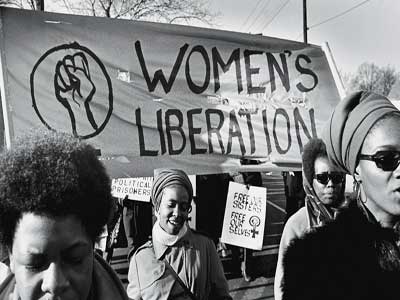 |
Peoples' movements and protests |
 |
|
Mobilizations19th century women's movementsThe early 20th century workers' movementsChina's women's movementLate 20th century feminismBack to Women's movementsBack to main page |
Late 20th century feminism
Between the twenties and the sixties, there were few women’s mobilizations. Most were preoccupied with Keynesian welfare policies of the type ”benefits for women”, alternatively, in the South, with state-building projects. What created the breeding ground for a new mobilization was above all: In the Nordic countries, more and more women were needed in the growing labor markets and to be placed there were sent to schools and politicized in the youth movement of the sixties (where they had to content themselves with sitting in the background). In the South, there were increasing demands for supplementary non-wage work during the recession after 1973 and that more and more women were recruited partly for low-paid public services and partly for industrial work in the new world market zones. The forms of women’s movement policy were also different in the North and the South. In the North, little attention was paid – with the exception of the years around 1970 – to work, neither low-paid paid commercial work nor unpaid domestic work. The focus was instead partly on oppressive ideologies about how women should be, partly on the abortion issue and when it had failed, the issue of violence against women. Due to the fact that these seemingly classless issues have been in focus, the women’s movements have largely been dominated by people from the upper middle class who have gradually shifted their focus to the issue of women’s right to make a career, become managers – and have other women as servants. In the South, work is much more in focus. Thus, female trade union activists in Southeast Asia, peasant women in Maharashtra, slum activists in Latin America and groups for local survival in Kenya have been able to lead the women’s movement. The weakness of this is, of course, that it can sometimes be difficult to find what the majority of women have in common. Reading
|
